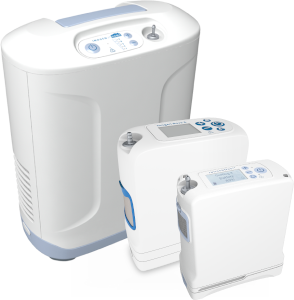You only have to inhale and exhale to appreciate the vital importance of oxygen in everyday life. The third most abundant element in the universe after hydrogen and helium, oxygen is an odorless, colorless and tasteless gas at room temperature and a key catalyst in many chemical reactions. Because it’s everywhere and invisible in its gaseous state, oxygen is often dismissed as being dull and inert when in fact, it’s a highly reactive non-metallic element.[1,2]
Oxygen makes up about 21% of the earth’s atmosphere. It is highly reactive and can combine with just about anything to create a variety of compounds. Fire, for example, is born out of a chemical reaction between oxygen and some sort of fuel, such as wood or gasoline, and a heat source, such as matches or friction. When certain metals react with oxygen they form oxides, such as iron oxides, commonly referred to as rust. Rust is a multi-million dollar problem around the world damaging bridges, buildings, engines, tools and pipes.[2]
Yet oxygen is life-sustaining as well; without it, most living organisms would die within minutes. It releases energy from nutrients in every living cell in a process called cellular respiration. One type of oxygen – ozone – forms a thin, protective layer around the earth that shields us from the harmful effects of the sun’s ultraviolet radiation. Oxygen is pumped back into the environment through photosynthesis, a process carried out by all green plants. It’s also a component of hundreds of thousands of organic compounds.[1]
The Discovery of Oxygen
While the history of oxygen therapy dates back to 1885, when Dr. George Holzapple first used oxygen to treat pneumonia, the history of oxygen—or the discovery of it, to be more precise—is a bit more complex. The discovery of oxygen dates back to 1771, when Swedish chemist Carl Wilhelm Scheele discovered its existence. Unfortunately for him, an English chemist named Joseph Priestly also discovered oxygen on his own, but published his findings three years before Scheele. Because of the complex nature of the discovery and publication, both scientists are often credited.[1] When learning about the discovery of oxygen, the origin of the name is interesting as well. The word “oxygen” is derived from the Greek words “oxy”, meaning acid, and “genes”, meaning forming. The gas was named “oxy-gène” by Antoine Lavoisier, who also claimed to have discovered it, and thus began the history of oxygen.[1]
Oxygen’s Role in Early Medicine
The potential value of oxygen for patients with respiratory conditions was quickly recognized after its discovery. Thomas Beddoes, considered the father of respiratory therapy, worked with the inventor James Watt used oxygen and nitrous oxide to treat asthma, congestive heart failure, The institute was open from 1795-1798, but oxygen remained available at apothecaries during the 18th and early 19th centuries, through generation by electrolysis. The first cylinders for storing oxygen were developed in 1868, which allowed its use in general anesthesia. By 1885, George Holtzapple used oxygen to manage a young patient with pneumonia, and established its role in acute care. Though patients were able to inhale oxygen therapeutically with a device that stored oxygen for intermittent use, it was not delivered effectively until the early 1900s, when a nasal catheter and oxygen mask were first introduced. Dr Alvan Barach (1895-1977) introduced oxygen therapy to the United States and refined its application through a series of pioneering innovations, books, and journal publications. His work included design of oxygen delivery devices, application of constant pressure breathing, and popularization of aerosol therapy. A version of these portable, small, high-pressure oxygen cylinders was used regularly well into the 1970s and is sometimes still in use today.[1]
Modern Day Oxygen Therapy
In the late 1960’s, the Medicare system began paying for oxygen for home patients. This set off “copycat” coverage guidelines in private insurance companies and within state Medicaid systems. By 1970, most commercial insurances, whether private or government, paid for home oxygen. The first payment model for home oxygen was a mathematical formula based on volume. Because the oxygen was delivered in tanks, a company would multiply the prescribed liter flow by the hours in a day by the days in a month and come up with a number for oxygen consumed. This was translated to dollars and cents. In some cases, with higher liter flows, oxygen could be reimbursed for several hundred dollars/month in 1960’s dollars. DME companies thrived as this new, cottage industry was born.[3] Since the 1980s, the use of oxygen in clinical practice has evolved to what it is today: commonly prescribed and administered across all health care settings, even in the home. With three types of oxygen delivery systems – compressed gas, liquid oxygen and oxygen concentrators – patients are able to make choices about oxygen delivery that best suit their individual needs.[4]
The history of oxygen concentrators begins in the late 1970s, when oxygen concentrators were first invented for home use, though they were quite large. As it became clear that patients wanted more mobility and freedom than the large home oxygen concentrators and oxygen tanks afforded, the portable oxygen concentrator was born.[4] Designed to travel and be used at home or away, the first portable oxygen concentrators were cleared for patient use by the FDA and FAA in the early 2000s. The history of oxygen therapy might go back further than you thought, but the history of oxygen concentrators is just beginning. Inogen is proud to be an innovator in this field, and is inspired by our purpose of improving lives through respiratory care.
Who Needs Oxygen Therapy
Although many people who experience shortness of breath require oxygen therapy, shortness of breath is not the qualifying factor that gives rise to its need. You may need oxygen therapy if you have: asthma, bronchitis or emphysema, COPD, cystic fibrosis, heart failure, lung or other cancers, pneumonia, pulmonary fibrosis or sleep apnea. Healthcare providers prescribe oxygen therapy when oxygen levels drop below 88%.[4] For more information about oxygen therapy, talk to your primary health care provider.
CITED SOURCES
- The Story of Oxygen | Respiratory Care (rcjournal.com) Heffner, John E. MD. “The Story of Oxygen.” Respiratory Care. Vol. No. 1 18-31. January 1, 2013
- Oxygen | Liberty Industrial Gases and Welding Supply, Inc. (libertygases.com)
- A Brief History of Home Oxygen Therapy (hqaa.org)
- Supplemental Oxygen Therapy: Types, Benefits & Complications (clevelandclinic.org) https://my.clevelandclinic.org/health/treatments/23194-oxygen-therapy










